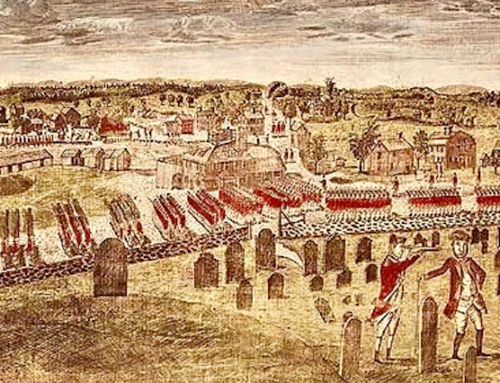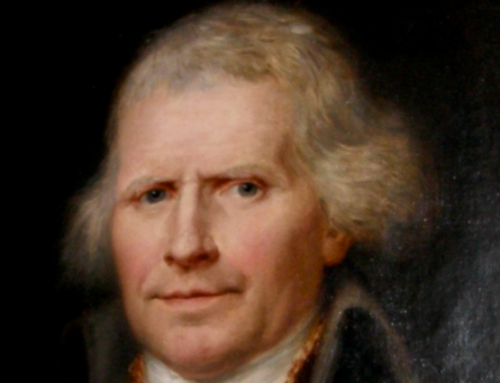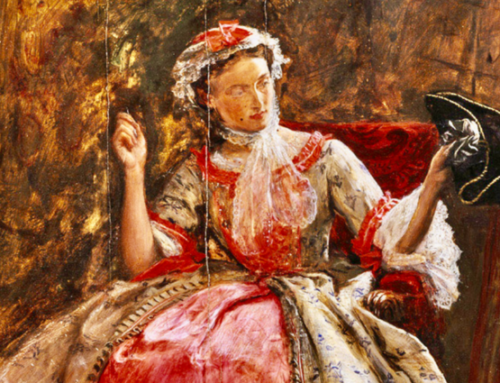 Having grown up in the capital of the Confederacy in a family riddled with unreconstructed rebels, I was always sensitive to these imputations of inferiority directed at the South and Southerners: my section and my people. Although I felt in my heart that something must be wrong, that we could not have been that bad, it was not until I began research for my doctoral dissertation that I discovered hard evidence which showed me to my own satisfaction what the war had been about. One’s own research brings a unique kind of conviction, the more so when, as in my case, the discoveries leaped unexpected and unlooked for from the documentary record. The more I studied that record, the more convinced I became that the job of the historian is not to pass judgment, but to try to understand.
Having grown up in the capital of the Confederacy in a family riddled with unreconstructed rebels, I was always sensitive to these imputations of inferiority directed at the South and Southerners: my section and my people. Although I felt in my heart that something must be wrong, that we could not have been that bad, it was not until I began research for my doctoral dissertation that I discovered hard evidence which showed me to my own satisfaction what the war had been about. One’s own research brings a unique kind of conviction, the more so when, as in my case, the discoveries leaped unexpected and unlooked for from the documentary record. The more I studied that record, the more convinced I became that the job of the historian is not to pass judgment, but to try to understand.
Through the years, such research as circumstances permitted me to conduct confirmed this view of history and this alternative view of the War of Secession. More and more, as I brought my findings to bear in my teaching, it seemed as if some large and important matters were either glossed over or omitted from that mainstream interpretation mentioned earlier. True, the mainstream was slightly disturbed by some new eddies, for the history industry, manned by the legions of graduate students and their professors in search of new topics, had been turning out a multitude of monographs, some of which revealed less than admirable aspects of Northern society. Yet none of this changed the moral balance of the prevailing view of the period, not least because, still looming over it all, still largely impervious to historical criticism, there remains that brooding giant seated in the Lincoln Memorial whose wisdom, compassion, and self-sacrifice sanctified the Northern cause and gave plenary absolution for any of its imperfections. So, not to split hairs, the basic image remained the enlightened, progressive North versus the benighted, backward South, and everyone should be thankful that Lincoln and the righteous North had saved “the last best hope of earth.”
But what of those large, angular, refractory facts so conspicuously inconspicuous even in this modified orthodoxy? How could the Northern cause have been so noble when, as had been amply documented, anti-black prejudice with so widespread in that section? When the unresolvable issue, territorial slavery, with so firmly rooted in racism and partisan politics? When Lincoln, in his first inaugural, stated his willingness to accept a constitutional amendment that would forever put slavery beyond the reach of Federal authority? When, as the war was ending, he suggested that southern states lay down their arms, re-join the union and either delay or defeat the pending Thirteenth Amendment? When the openly avowed purpose of the war according to the ruling Republican Party was to make that party a permanent majority in the nation? And when every act of congressional reconstruction flagrantly pursued that object? When the prosecution of the war was accompanied by what even high-ranking Northern officials called a carnival of corruption? When Lincoln himself presided over a system of illegal commerce that allowed his friends and supporters to enrich themselves by selling supplies to Confederate armies? When Union soldiers not only needlessly laid waste large areas of the South, but robbed, tortured, murdered, and raped defenseless civilians, blacks as well as whites? When in a boasted government of laws, ruthless force and military occupation were used to rewrite the Constitution in order to enthrone the Republicans in power forever? When, after Southern blacks had served their political purpose, the Republicans abandoned them to those same Southerners whom they had so long denounced as merciless brutes?
Without belaboring the point further, I thought that this book was as good a place as any to look at the era from a different angle and to emphasize some of the neglected aspects of the American Iliad. If the result was to make the picture of the North as America’s Moral Majority less plausible, if it made Yankees seem to have as much of original sin as rebels, so be it. I am happy to leave such matters to those who see history as a kind of morality play, or, what is worse, propaganda.
—Preface to the 1995 edition of North against South: The American Iliad, 1848-1877
The Imaginative Conservative applies the principle of appreciation to the discussion of culture and politics—we approach dialogue with magnanimity rather than with mere civility. Will you help us remain a refreshing oasis in the increasingly contentious arena of modern discourse? Please consider donating now.
The featured image, uploaded by Fredlyfish4, is a photograph of the grave of Stonewall Jackson’s left arm, on the battlefield of Chancellorsville, Virginia. This file is licensed under the Creative Commons Attribution-Share Alike 4.0 International license, courtesy of Wikimedia Commons.







I’m not sure we can even call it “judgement.” A judgement should be based on facts and an understanding of the situation. It seems what we have today is a pile of opinions in an almost complete absence of true facts and understanding.
I’m from Connecticut and their history of slavery, discrimination (blacks, Irish etc) is generally swept under the lumpy rug.
But there does come a time, while understanding the past and and its faults, we need to appreciate the progress that has been made over time and continue that progress. Hopefully we can avoid making too many more mistakes.
What we have today is Dynamic Silence. Only one side is presented, the other demonized. I hear it said we are having a national discussion about race, slavery and the confederacy. All I see is a lecture about how bad the South was and is. I also hear we are having a debate of the same issues. What I see are those that Hate the South debating among themselves, who can denigrate us the most. Slavery is called Americas original sin, Therefore Southerners are the original sinners. There are many more things I could say, however I will finish with this quote by Salmon P. Chase, 1859; “I do not wish to have the slave emancipated because I love him, but because I hate his master”.
Read the cornerstone speech. Vile defense of white supremacy riding on Christian coattails by a leader of the confederacy. Read the declarations of causes of secession. All. About. Slavery.
Is this your rebuttal Susan? Is this the best you can do? Are you a Christian Susan? I see you hate white supremacy, do you hate black supremacy, yellow supremacy, Male supremacy, Have you read all of the Declarations of Secession. Do you imply that the South is evil? But that the North is good?
Mr. Johnson casts the War Between the States as a morality play. This is just a clever device to diminish the fundamental moral conflict of the war. It is not enough to say, “All of America, North and South, had feet of clay.” Any dispassionate reading of the historical record will find the secessionist position, as the Mississippi Declaration of Causes so clearly states, “thoroughly identified with the institution of slavery.” The Texas Declaration of Causes was even more blunt: “maintaining and protecting the institution known as negro slavery … which her people intended should exist in all future time,” and “the debasing doctrine of the equality of all men, irrespective of race or color–a doctrine at war with nature, in opposition to the experience of mankind, and in violation of the plainest revelations of the Divine Law.”
There is a clear lineage from slavery through Jim Crow, lynching, segregation, and now presenting in racial voter suppression. Southern culture and heritage is a heritage I happen to share. But is only distinguishable from Northern heritage by the echoes of slavery and the remaining psychological undercurrent of white supremacy and racial subjugation. That’s the only material difference between the North and the South, that is once you get past the chitlins and grits.
Mr. Johnson pretends there is some permissible equivocation about this. All people of good will need to agree – there is not.